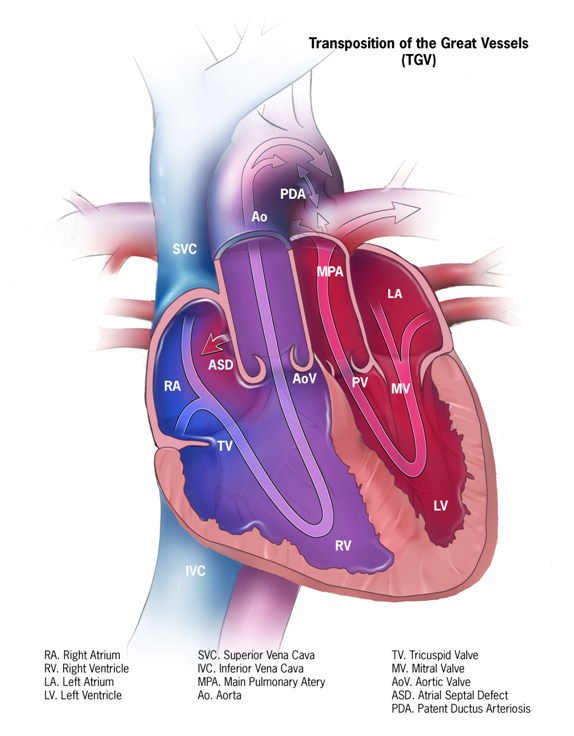Shared Content Block:
Surgery Styles -- "surgery-flex-gallery" class
Shared Content Block:
Surgery Styles -- "surgery-spaced" class
Transposition of the Great Arteries
Transposition of the Great Arteries (TGA) occurs when the two main arteries leaving the heart are switched in position, or transposed.
- The aorta, which normally moves blood from the left side of the heart to the body, instead comes from the right side of the heart and takes oxygen-poor blood into the body.
- Conversely, the pulmonary artery, which normally moves oxygen-poor blood from the right side of the heart to the lungs, is attached to the left side of the heart and returns blood coming from the lungs directly back into the lungs.
Because of this defect, oxygen-poor blood returning to the heart is not sent to the lungs for oxygenation but is instead pumped back out to the body. This results in too little oxygen in the bloodstream.
This congenital birth defect occurs in 5 of 10,000 births. Its true cause is unknown. Symptoms are usually noticed at birth or soon afterward and include a bluish tint to the skin, shortness of breath, and poor feeding.
Surgery shortly after birth can be performed to correct the defect. Most babies with TGA grow up to lead healthy and productive lives.
More information can be found by visiting the Heart Institute at Children's Hospital Colorado.
Note: TGA is sometimes referred to as Transposition of the Great Vessels (TGV).
Appointments and Information
This information is provided by the Department of Surgery at the University of Colorado School of Medicine. It is not intended to replace the medical advice of your doctor or healthcare provider. Please consult your healthcare provider for advice about a specific medical condition.
